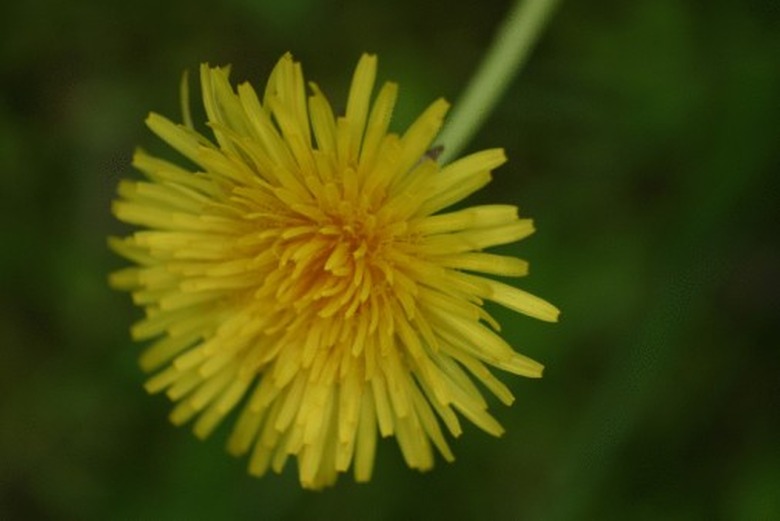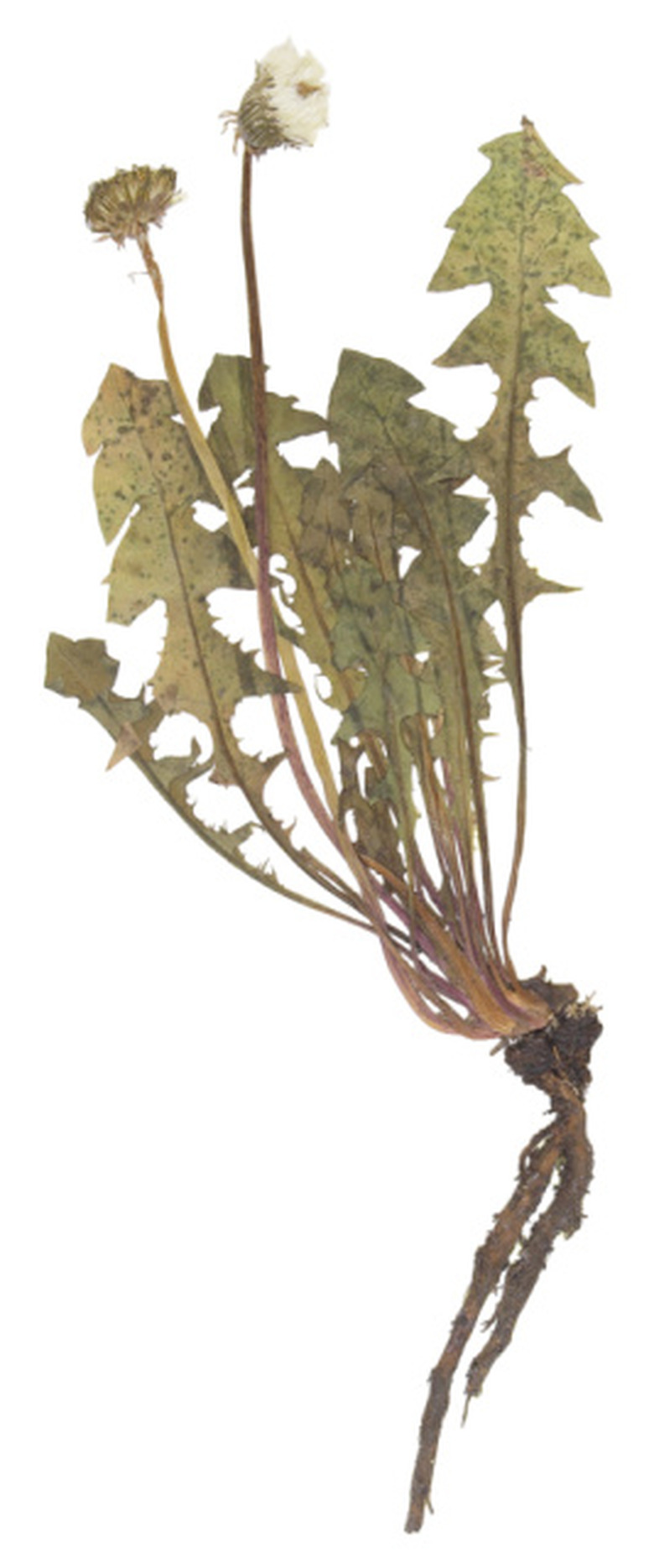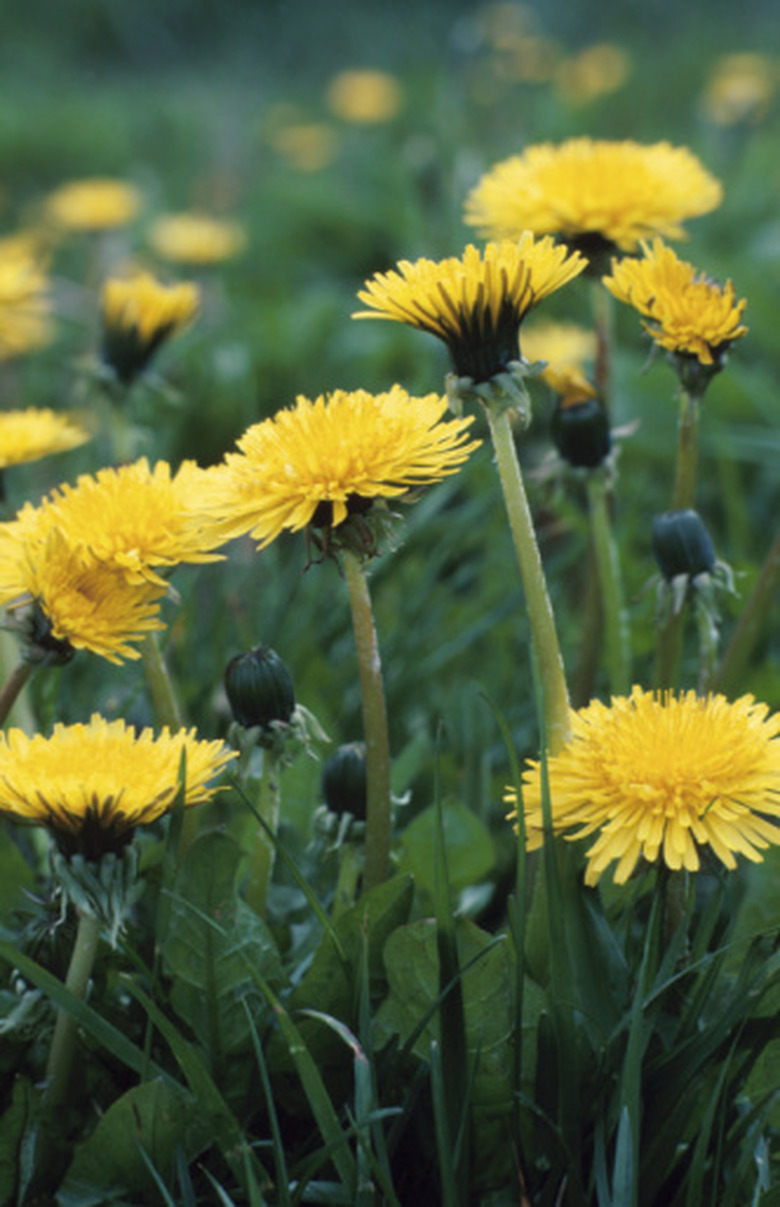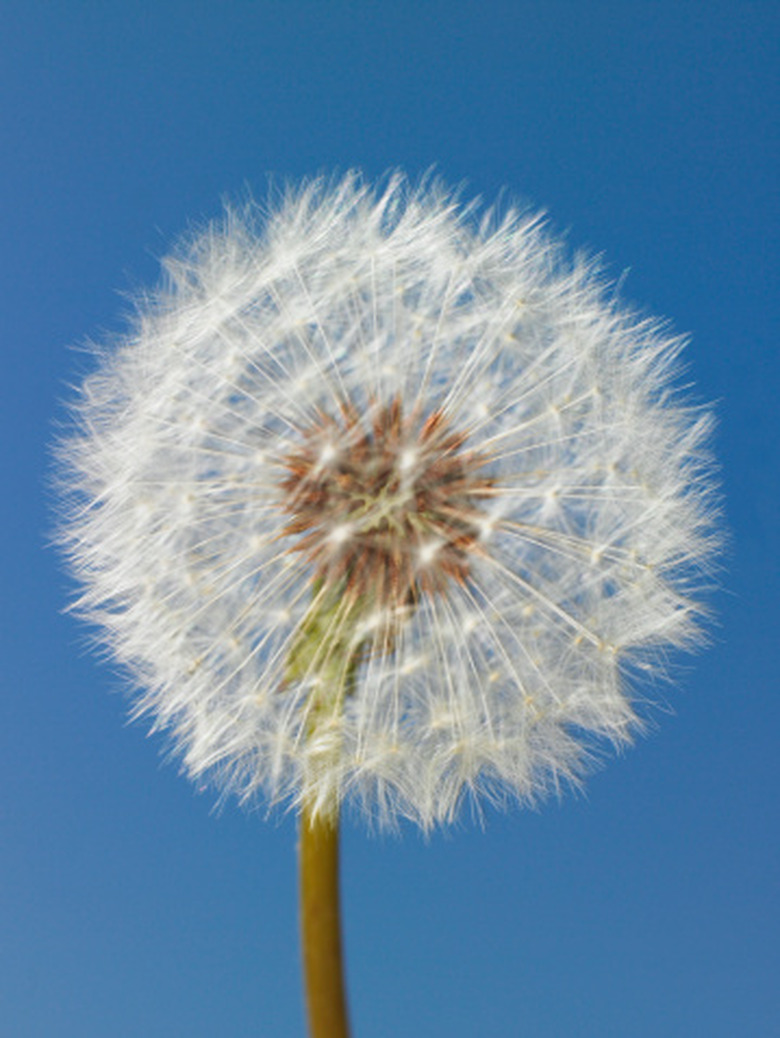Characteristics Of A Dandelion
The common dandelion (Taraxacum offinale) is an introduced plant from Europe and Asia that is so hardy, it grows in every state, as well as most provinces throughout Canada and into Mexico. Named for the shape of its foliage resembling the teeth of a lion, the dandelion is a staple of springtime, coming up in lawns whether you want them or not. Dandelions are among the most familiar plants, with their characteristics unmistakable.
Size
The taproot of the dandelion is as thick as ½ inch in the largest specimens, notes the Virginia Tech Weed Identification Guide. The taproot grows as long as 6 inches, making dandelions hard to remove easily. The leaves grow outward from the base of the plant. The stems that hold the flowers can reach lengths of 24 inches, though most are in the 6-inch range.
Leaves
The foliage of chicory, another common weed, resembles that of the dandelion, but chicory leaves have lobes that do not point to the middle of the plant's base, as does the dandelion's. Leaves form a whorl about the base of the dandelion where it emerges from the ground, growing to lengths between 2 and 16 inches, with most no longer than 8 inches. These basal leaves are bright green and feature the irregular teeth all along their edges that give the weed its name.
Stem and Flowers
The stems that support the flowers of the dandelion are naked as well as hollow, with a milky sap exuding from them when you pick them. The flowers bloom as early as March and into the autumn months, repeatedly blooming throughout the growing season. As wide as 2 inches, the yellow flowers have tiny modified leaves called bracts at their base. The bracts are pointy and narrow, with some pointed downward, according to the "National Audubon Society Field Guide to Wildflowers: Eastern Region."
Seeds
As familiar as the yellow flowers of a dandelion are its seeds. Once the flower finishes blooming, a seed head covered with hundreds of tiny parachute-like bristles develops. The wind blows the bristles and the attached seeds about, further spreading the dandelions. The seed head resembles a whitish, puffy ball when ripe, with its seeds easily dispersed by even the slightest breeze.
References
- Virginia Tech Weed Identification Guide: Dandelion
- National Forest Service: Taraxacum Officinale
- "National Audubon Society Field Guide to Wildflowers:Eastern Region;" John W. Thieret, Revised 2001 (Page 419)



